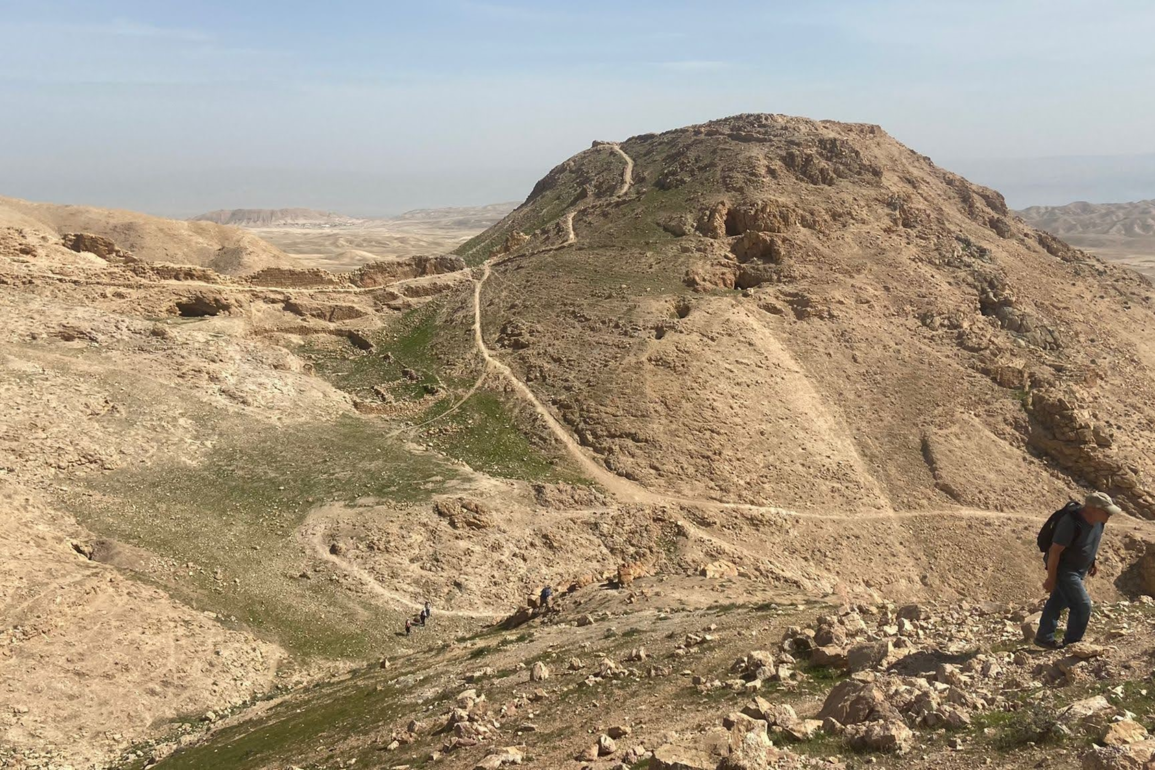Archaeologists from the Hebrew University of Jerusalem have discovered an ancient Christian inscription during excavations at the ancient fortress of Hyrkania, southeast of Jerusalem.
The text, written in biblical Greek, paraphrases part of Psalm 86 and inserts the name of Jesus Christ, Israeli media reported. According to the report, it is the only inscription in Koine Greek found so far on a stone.
Instead of the original Hebrew text “Hear me, Lord, and answer me, for I am poor and needy,” the found version reads “Jesus Christ, protect me, for I am poor and needy.” The inscription was found on the side of a large stone. The red inscription is decorated with a cross. The psalm, also known as the “prayer of David,” is one of the most recited in the Christian liturgy.
Archaeologists from the Hebrew University of Jerusalem have discovered an ancient Christian inscription during excavations at the ancient fortress of Hyrkania, southeast of Jerusalem. The text, written in biblical Greek, paraphrases part of Psalm 86 and inserts the name of Jesus Christ, Israeli media reported. According to the report, it is the only inscription in Koine Greek found so far on a stone. Instead of the original Hebrew text “Hear me, Lord, and answer me, for I am poor and needy,” the found version reads “Jesus Christ, protect me, for I am poor and needy.” The inscription was found on the side of a large stone. The red inscription is decorated with a cross. The psalm, also known as the “prayer of David,” is one of the most recited in the Christian liturgy.Byzantine Greek Inscription Of Psalms 86 Found In Hyrcania: Unearthing Ancient Faith https://t.co/ZACvn7eCtF pic.twitter.com/ShHTfdyEdt
— Greek City Times (@greekcitytimes) September 28, 2023
Small grammatical errors
Avner Ecker, an epigrapher at Bar-Ilan University, described the inscription as graphite. He said that an examination of the writing indicated that the inscription had been placed no later than the first half of the 6th century AD. Small grammatical errors suggest that the scribe, possibly a monk, was a native Semitic.
A second inscription found at the site is reportedly being investigated. Also found was a child-sized gold ring with the inscription “Mashallah” (God willed it) in Kufi script, which researchers believe dates back to the time of the Umayyad dynasty, in the 7th and 8th centuries. Some parts of the inscription are inverted, which could indicate that it was used as a seal.
The fortress of Hyrkania, in Arabic Khirbet el-Mird (Fortress Ruin), is located about 17 kilometers southeast of Jerusalem, on the top of an inaccessible hill in the Judean Desert. Apparently, it was built in the 2nd or 1st centuries BC by the Hasmonean ruler John Hyrcanus or his son Alexander Jannaeus. In the ruins of Hyrkania, the Kastellion monastery was founded in 492 by the monk father Sabas. It continued to be used after the Islamic conquest of the area in the 7th century, but was probably abandoned at the beginning of the 9th century.
The current excavations are the first to be carried out for scientific purposes. Further excavations are planned for early 2024.





